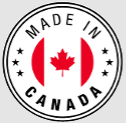How do you get an Education Loan?

What is the purpose of an education loan?
If you are currently working at a job and want to take the next step in your career, a common way to do so is by going back to school to acquire additional knowledge and skills. However, ‘going back to school’ doesn’t necessarily have to mean an expensive program that would set you back tens of thousands of dollars: in Ontario, there are hundreds of continuing education programs offered by leading education institutions that begin from $700 to $800.
In some cases, employers may already have defined programs in place to support the development of their employees. In these cases, the employer may subsidize part or all of the costs associated with the program. However, these subsidies often come with a stipulation that the employee must rejoin the employer at the completion of the program and work with them for a minimum number of months or years.
If you’re an employee that is looking for a career change outside of your present employer and/or if the cost of the program is not something you can pay upfront given your other financial obligations, an education loan can help you bridge that gap. In essence, it works the same way as any other loan. The lender provides you with a fixed sum of capital upfront that then has to be repaid over time in instalments with interest that is calculated based on your unique financial profile and credit history.
What type of loan is right for you?
In Canada, student loans are provided and administered by the federal government. However, if you are looking for a smaller loan for a continuing education course that ranges in the $1000 to $10,000 range or so, you can explore several personal loan options offered by lenders including traditional banks, online banks, and other alternative lenders.
Term Loan
A term loan is the standard loan product that involves an upfront sum of cash being deposited into the borrower’s account. The borrower uses this cash to fund the required expenditures and then pays back the loan in instalments over a fixed period. The rate of interest that the borrower pays is dependent on their own circumstances and credit score. Naturally, a higher credit score will result in a lower rate and vice versa. While most personal loans are unsecured, a secured personal loan could also be an option. In a secured loan, the personal property of the borrower is pledged to the lender as collateral. If the borrower fails to make repayments, the collateral is sold by the lender to recoup their money.
Some advantages of a term loan product include:
Simplicity: Most term loans can be secured and funds can be deposited into borrower accounts within a day to a week. Thereafter, repayment can happen every month. These days, most banks also offer an online platform where the borrower can track their payments and the amount outstanding on the loan.
Convenience: A personal loan can be used for almost any discretionary purpose that the borrower requires. This makes it convenient for a borrower to juggle multiple financial obligations.
Principal amount: Potentially large sums of money can be borrowed provided that the borrower proves they are a responsible borrower.
Some considerations of a term loan include:
Collateral: If you are obtaining a secured loan, it is important to ensure that you remain updated with payments. Missed payments can result in the lender seizing collateral to assure repayment.
Non-flexible: If you obtain a term loan and then realize that you didn’t need the full amount, there is no flexibility to only pay interest on the amount you need. You will still have to pay interest costs on the full amount.
Repayment penalties: Lenders will sometimes have repayment penalties for loans that are paid earlier than their term.
Revolving Loan
Another type of loan product offered specifically for students by banks and other lenders is the line of credit (also called a revolving loan). The LOC works similarly to a credit card, but is not as expensive as a credit card. Effectively, the borrower can borrow up to a fixed maximum limit. As they borrow on the line, the availability reduces dollar-for-dollar. Once a repayment is made, the availability increases by the same dollar amount as the repayment. For example, consider a line of credit with $10,000 as the upper limit. If a borrower draws down $2,000, they can still draw down $8,000 more. Suppose that a month later, the borrower pays back $500 of the $2,000 borrowed. In this case, the availability of the line of credit now becomes $8,500.
The revolving loan is best for students who are looking to have a ‘safety net’ when balancing their academic obligations in addition to their general life. By having an extra source of capital, students can ensure that they do not have to rely on expensive overdraft accounts or credit cards.
How to Improve Your Chances
To qualify for a personal loan, you need:
Personal identification (at least 2 government-issued documents)
SIN Number
Bank statement(s)
Credit report with acceptable credit score
Other ad-hoc items that vary from lender to lender
To qualify for a student line of credit, you need all of the above, plus:
Confirmation that you are enrolled in a Canadian post-secondary institution
Estimate of total education costs
List of your income (including scholarships and bursaries)
Proof that you are a Canadian citizen, Permanent Resident, or landed immigrant
To strengthen your chances of qualifying for a personal loan or student line of credit, you can ensure you do the following:
Clean up your credit report by making all outstanding payments
Consider your income and funding needs, and ask for a suitable amount of capital. In other words, don’t ask for something you can’t afford or don’t need
Bolster your income with a side hustle, scholarship or another such cash infusion
Final Thoughts
Enrolling in a continuing education course is a great way to put your career on the fast track. However, it is also important to remain fiscally responsible when doing so. Contact our team at Magical Credit to evaluate your options for a personal loan, and learn about the favourable terms we offer to students studying at a Canadian institution.





